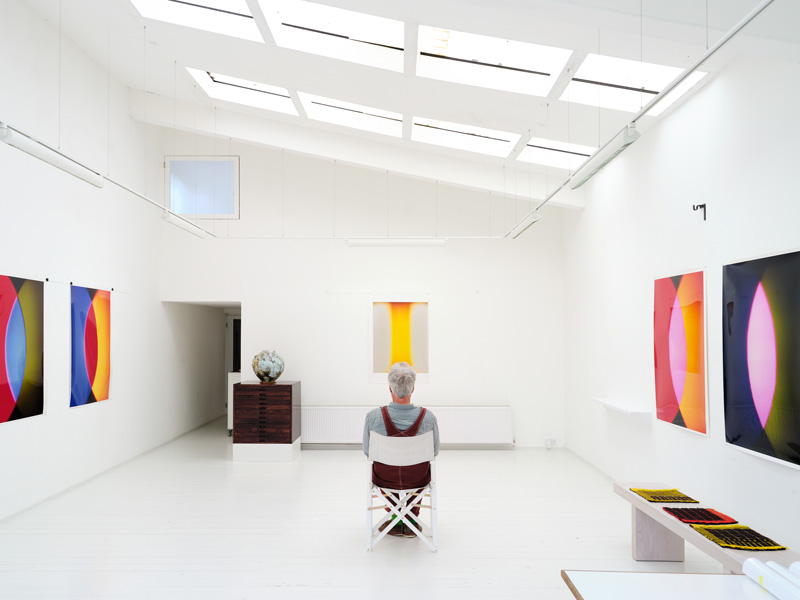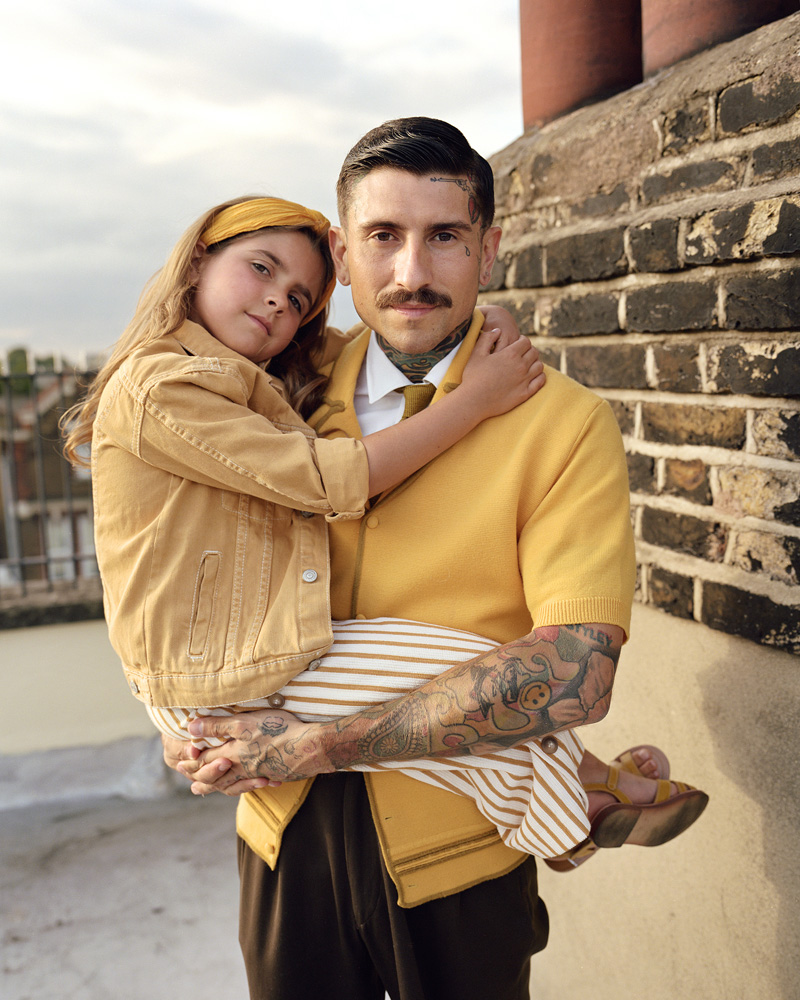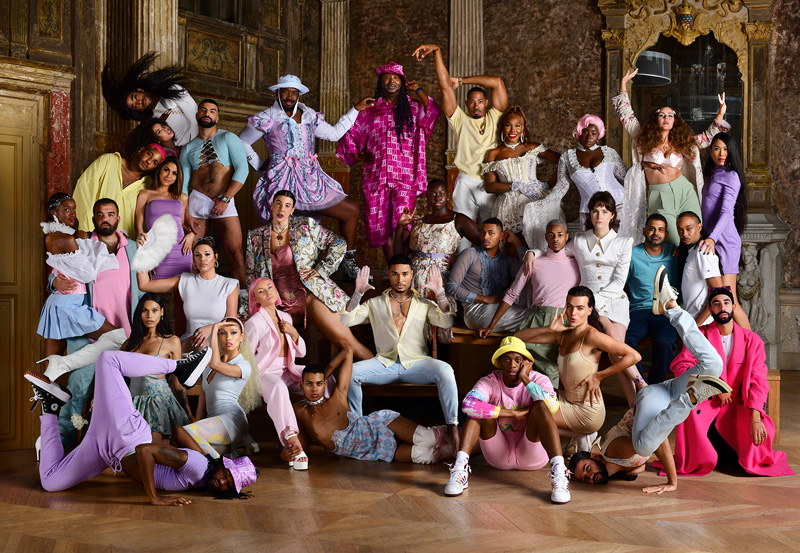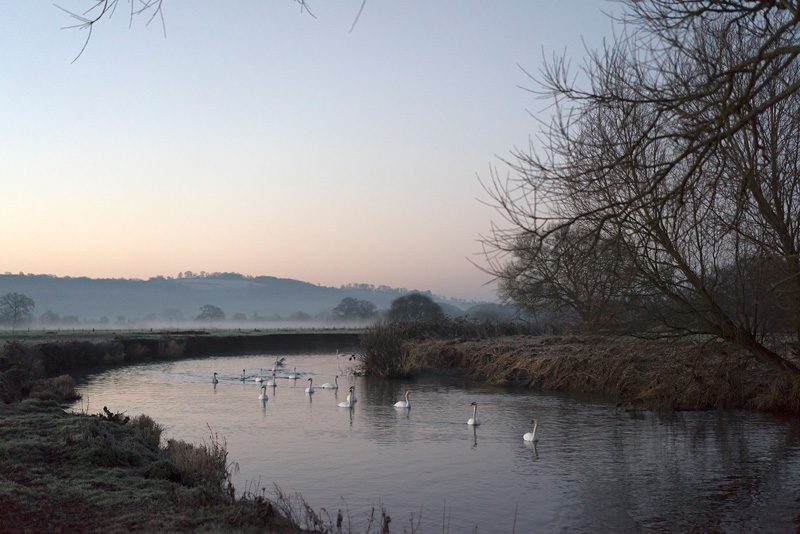As three of the city’s finest art galleries prepare to showcase the brilliant work of renowned photographers – including Bristol-born artists Jem Southam and Garry Fabian Millier – we take a closer look at what’s on offer at the RWA, Arnolfini and The Royal Photographic Society this month…
Jem Southam: A Bend In The River, Royal West of England Academy (RWA), until 1 May
This month, the RWA presents a special exhibition by leading Bristol-born photographer Jem Southam. Southam is known for his diligently observed landscape photography documenting subtle changes in an environment over time, often photographing his surroundings in the South West of England.
A Bend in the River, presented in collaboration with Bristol Photo Festival, displays a series of the same name structured in two parts representing arrival (at dusk) and departure (at dawn). The images were taken at a particular spot on a riverbank where Southam became lost in contemplation one December evening. He returned to the same spot each day during the rest of the winter. Over the following five years between 2015-2020, Southam continued creating series in the same location. The ever-changing surface of the water, passing clouds, trees waving in the breeze, ducks gliding across the river and swans flying to roost caught Southam’s attention and what began as a passing digital photo led to powerful ongoing series of deeply affecting photography.
Interspersed across Southam’s photographs is a curated selection of artworks that have inspired him and complement his practice. For example, pieces by artists such as JMW Turner, John Constable and John Leigh-Pemberton; illustrators of popular natural history books; and artists who worked for publications such as Ladybird and Shell.
Ahead of the exhibition launch, we spoke to Jem to learn more about his recent project and his everlasting relationship with the West Country…
What’s your relationship with the West Country landscape, and why you have made it central to your work?
I was born in Bristol in 1950 and came back to live in the city in 1972 after studying photography in London. I worked at Arnolfini through the late 1970s and spent five years making a study of the docklands landscape of the Floating Harbour. Then, I moved to west Cornwall for my first teaching job at Falmouth School of Art, and began photographing in the area. Another teaching post brought me to Exeter and Devon, where I have lived and worked ever since.
There are a number of reasons why I make my work here. One might be called a philosophical reason, and that is a belief that the world outside one’s own front door is just as remarkable as that anywhere else. So good pictures can be made anywhere, not at the end of some metaphorical rainbow.
The second reason is a practical one. I work five days a week while teaching and have a family, so little time to travel. As I have mentioned my practice involves becoming fixated by a site and making work by repeatedly visiting it often, but not always, over many years. I do not have any idea what is going to happen when I begin, rather allowing the process to lead me towards a new project, exploring new ideas. So, proximity makes sense and I develop strong relationships with the places I photograph.
There is another reason though, and this one is really important. We just so happen to live, here in the South West of England, in one of the most extraordinary places on Earth to make colour landscape pictures. Because of the latitude and longitude, our seasons transition gradually, spring stretches out from some time in February to maybe the middle of June, a slow, slow slide through a season. Dawns in mid-winter last an hour and a half, near the equator it is a matter of minutes – so once again that gradual shift from one state to another. Furthermore, because the South West projects out into the Atlantic, into the Gulf Stream, we have a warm temperate climate, a great deal of humidity and endlessly varied weather, which all helps create what I reckon are the very best conditions on Earth to explore the making of colour pictures.

Above: Taken on 17 December 2016 | Jem Southam, A Bend in the River © Jem Southam
How did Bend in the River evolve?
Thaw by Edward Thomas
Over the land freckled with snow half-thawed
The speculating rooks at their nests cawed
And saw from elm-tops, delicate as flowers of grass,
What we below could not see, Winter pass
This poem gave me the idea to photograph the passage of a Winter, a study of something we could not see. I began in 2010 photographing at a variety of sites along the Exe river, it was such a wonderful thing to do that after the first winter, I started all over again and then again, four winters in all, with a huge 10×8-inch plate camera using analogue film. Then, one December evening I was sitting on a log by the river, contemplating life while watching the dusk settle, and becoming completely absorbed with the view in front of me, the rippled surface of the stream, the swaying trees and bushes along the bank and a pink cloud that was making its way over the distant hills, when two mallard ducks suddenly pushed their way across the stream. I quickly took a picture with the small digital camera I had started carrying around and was so captivated by that moment that I decided there and then to return to the same place, at dusk, through the rest of that winter, and wait for the world to present something to make a picture about, and that I would call the work that resulted ‘a bend in the river’.
That winter was not especially successful, though the experience of each visit was highly rewarding, so I started again the next November, and am now photographing through the eighth winter, doing the same thing, on the same bend – it is that compelling.

Above: Taken on 12 December 2017 | Jem Southam, A Bend in the River © Jem Southam
What drew you to this particular location?
Firstly, I always make work in proximity to, and about, water, and have done several river studies over the past 40 years, the best known called The Red River, along a tinning stream in west Cornwall. Like all the places I make bodies of work, this current site is close to home, which I can visit frequently. It is on the floodplain, the Exe is a highly volatile river, so though a quiet scene, I witness an endless landscape drama. This is significantly added to by the presence of swans, geese and ducks, which spend the night on the river – arriving almost in the dark and leaving usually before the sun rises. As well as following the passage of a season, I also follow the passage of a dawn or dusk, times of the day when the light is steadily changing and providing opportunities for making rich, sonorous pictures.
The gathering of swans seemed to become a particular inspiration leading to the second part of the series Swan Winter – could you tell us about the northern European myth and Scandinavian folklore that the series draws on?
One dusk early on, a large group of swans descended onto the river in the near dark and paraded backwards in a line along the river in front of where I stood. This sight brought to mind the ‘corps de ballet’ of Tchaikovsky’s Swan Lake. I began to reflect on the presence of the many folktales from North West Europe in which swans played a significant part. This was spurred on by fact that my mother-in-law was Finnish and growing up in rural Finland her imagination was steeped in these myths. In Bronze Age Scandinavia swans are depicted, along with horses, pulling the sun across the sky and then down into the underworld, before reappearing each new day, raising it back into our own world once again. I think these powerful myths still have resonance in our modern world.
What do you hope audiences will take away from the exhibition?
That the world outside their front door is just as interesting as that of anyone else’s on this planet. That good pictures can be made by standing still and watching and listening, by being patient and paying attention. I would hope that they, like me, might wonder at the birds and their behaviour. That at the RWA and at other galleries in Bristol, they can see and hopefully relish, a wonderfully varied mixture of fine art. My friend, the artist Garry Fabian Miller, who also now lives in Devon, has an exhibition at the Arnolfini beginning in February. That two Bristol lads have returned to their home city with large exhibitions, at the same time, is, I like to think, something to celebrate.
For more information about the exhibition, visit: rwa.org.uk
Garry Fabian Miller: ADORE, Arnolfini, 18 February – 28 May
Garry Fabian Miller is arguably one of the most inventive and original photographers of his time. This month, he makes a very welcome return to Arnolfini, and his home city of Bristol, to present ADORE, a major exhibition celebrating a lifetime of his work.

ADORE invites audiences to explore Fabian Miller’s ‘camera-less’ practice that experiments with darkness and light, and weaves in work by the artists, writers and thinkers that have inspired him over the years.
Arranged around different elements, ADORE reveals an artist of incredible patience – returning to capture the same grove of hawthorn trees throughout the seasons, year after year – and for whom the slowing of time has taken on a deep-rooted importance. Beginning with images from Sections of England: The Sea Horizon (1976 to 1977) – originally shown at Arnolfini in 1979 in Fabian Miller’s first ever solo exhibition when he was just 19 years old – the artist’s deep affinity with nature is established.
Followed by early examples of his pre-abstract practice, ADORE introduces audiences to just some of the recurring characters, such as the plants and flowers that adorn his garden and stretch out into the surrounding hedgerows.
With a myriad of artists and makers, gardeners and Quakers, thinkers, and writers, ADORE welcomes you into a homely space of new tapestries and rugs created with Dovecot, Edinburgh and Dash + Miller, alongside a rich array of pottery, printmaking, archive material and textiles.
The exhibition then moves into themes of light (and colour) that run throughout Fabian Miller’s practice, as his work moves out of the darkroom to discover a new stage of his imagery development process.
Finally, the narrative winds its way back to Dartmoor – the place in which the artist has made his home and found endless inspiration – featuring a collaborative project with photographer Nicholas J R White, and revisiting some of the places that have been the inspiration for earlier works in the exhibition.
ADORE is Garry Fabian Miller’s third major exhibition at Arnolfini, his earlier shows being in 1979 and 1997. What’s more, in January 2022, Fabian Miller was awarded an Honorary Fellowship with the Bodleian Libraries at Oxford University. Garry’s Fellowship came as part of the libraries’ increasing commitment to enhancing both the study of photography at the university and public engagement with the field, especially where it relates to material practices.
For more information about the exhibition, visit: arnolfini.org.uk

Featured image: Bristol-born artist Garry Fabian Miller will be exhibiting his work at Arnolfini until the end of May
International Photography Exhibition 164, The Royal Photographic Society (RPS), until 7 May
The RPS International Photography Exhibition is back with its 164th edition showcasing powerful stories and highlighting important themes. The world’s longest running contemporary photography exhibition is now open at RPS Gallery, showcasing 103 works by 46 photographers until 7 May.

Above: Lou and Paisley by Owen Harvey
The exhibition explores themes of identity, cultural heritage, sexuality and gender, mental health, and environmental and political issues. This edition is especially strong with both traditional and alternative processes being used in photography including analogue work, cyanotypes, and collage. The selected photographs were chosen anonymously from a worldwide open call in which over 6,000 images were entered by 3,466 photographers from 48 countries.
Each edition of the International Photography Exhibition invites a panel of leading voices in photography, and they bring an exciting mix of expertise as artists, curators, editors, and commentators. This year’s guest selection panel were Mariama Attah (Curator, Open Eye Gallery), Amak Mahmoodian (Artist), Ryan Prince (Portrait and Documentary Photographer) and Dr Michael Pritchard, RPS Director of Programmes and photo historian.
Every year selected exhibiting photographers are offered exclusive opportunities including two awards, the IPE Award and the Under 30’s Award alongside a £4,000 prize fund for standout entrants, a photographic commission to create new work, and features in the award-winning RPS Journal. This year, the IPE 164 Award was given to Natcha Wongchanglaw for her series Couchsurfing Hosts and the Under 30s Award was presented to Siqi Li for her series Empty Nest, which explores family, parenthood, ageing and the sorrow of separation.
On receiving the IPE 164 Award, Natcha Wongchanglaw said: “In addition to knowing that my work has been chosen for the exhibition where the work of the world’s most renowned photographers, including Roger Fenton and Paul Strand, was once exhibited, I am thrilled and deeply humbled to have received the IPE Award. I can’t even begin to express how grateful and honoured I am.”
The International Photography Exhibition 165 opens for entries on 7 February. For more information about the exhibition, visit: rps.org | Images courtesy of The Royal Photographic Society




